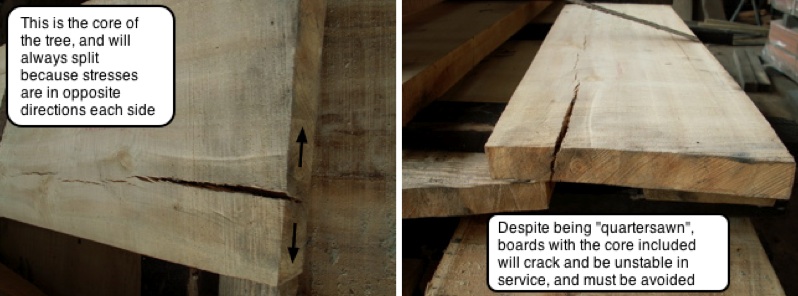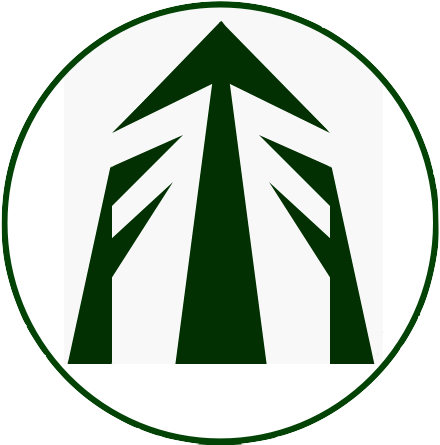Sawing Southern Beech
Southern beech species are variable in their seasoning properties and sawing should take into account such variability: Silver beech and black beech season easily and most sawing strategies are successful. Hard beech and red beech should not be sawn then seasoned in large dimensions, otherwise checking and distortion could result. Hard beech is well known for its ability to blunt saw blades because of the silica present in the wood.
End splitting can be an issue. Southern beech is also prone to release stress as splitting in front of the saw and movement off the saw. Eucalypt sawing patterns can be used successfully.
The pith should be avoided as this splits and will not be dimensionally stable in service.
Red beech should not be sawn and seasoned in thicker dimensions. Much greater than 25mm nominal thickness can be difficult to season successfully and requires more care.
Beech timber must be dried very slowly. This means air drying for at least a year. Silver beech is an exception and is much easier to dry. Black beech dries with little cupping, even if flatsawn as wide boards.
Cell collapse seen as sunken patches in the dry wood is evident in most beech species. Overcutting the green size allows for skip and recommended sizing is 10-20% over the nominal size.
In order to mill Southern beech well, one should understand stresses and how these influence how the timber is sawn and how it seasons.
Rules of thumb
- Never include the pith

Caption text in sawn hardwood boards or flitches; - Mill as soon as possible after felling to minimise end-splits;
- If quartersawing pay attention to crook;
- If flatsawing do not saw excessively wide boards (these will cup) and season the timber slowly and carefully;
- If movement is high try to keep log lengths short and use straightening cuts to deal with movement (i.e. quartersawing).
See also Drying Hardwoods
Disclaimer: While every effort is made to ensure the accuracy of the information provided on this site, Farm Forestry Timbers Society do not accept liability for any consequences arising from reliance on the information published. If readers have any doubts about acting on any articles they should seek confirming, professional advice.
 Farm Forestry New Zealand
Farm Forestry New Zealand Farm Forestry Timbers - Headlines
Farm Forestry Timbers - Headlines